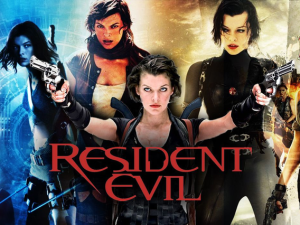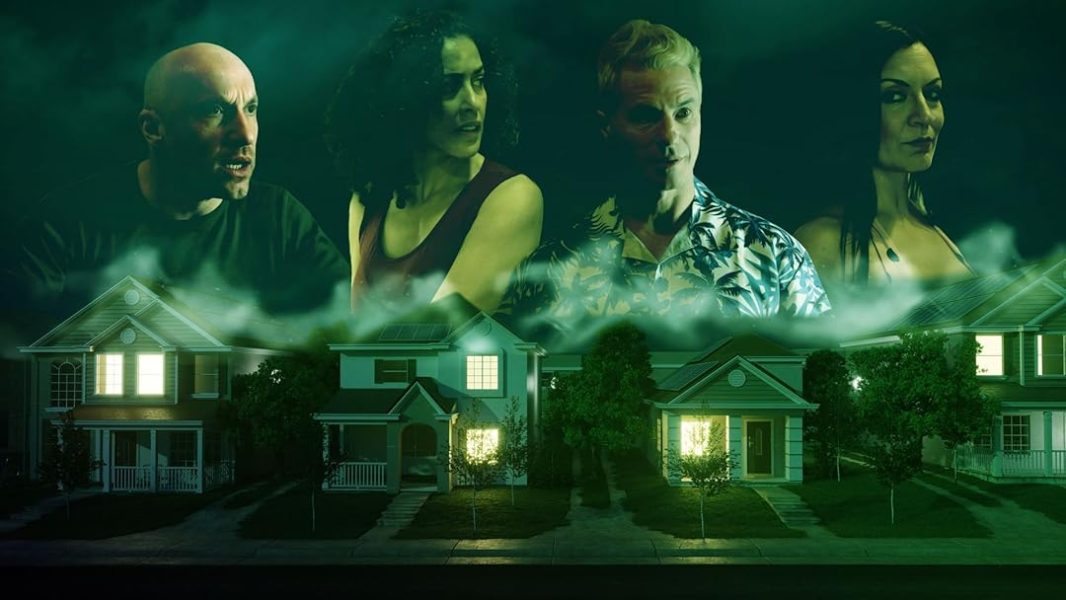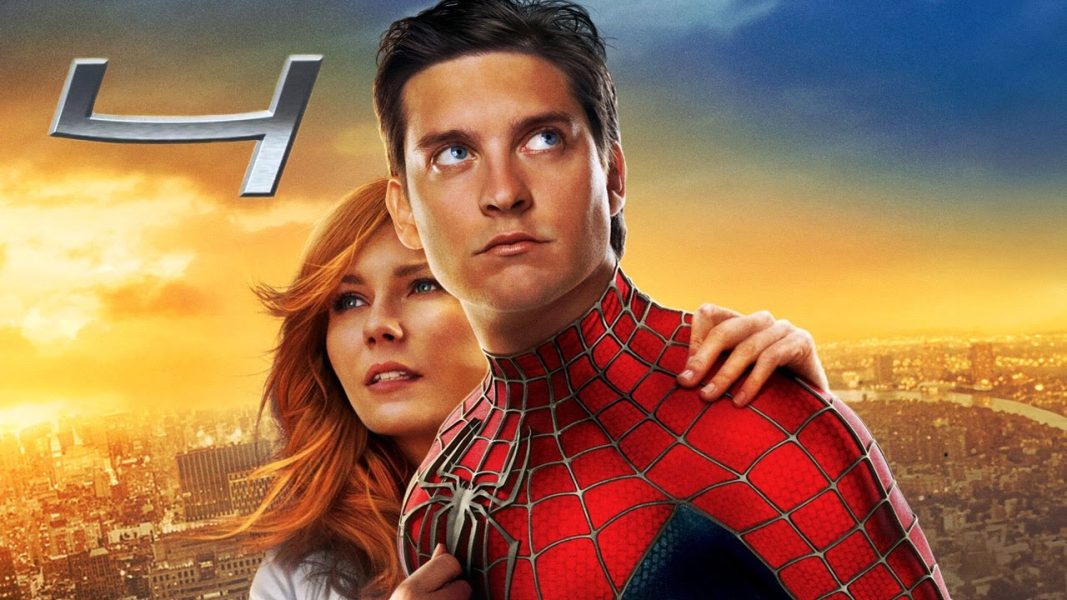Every Hayao Miyazaki Film Ranked from Best to Worst
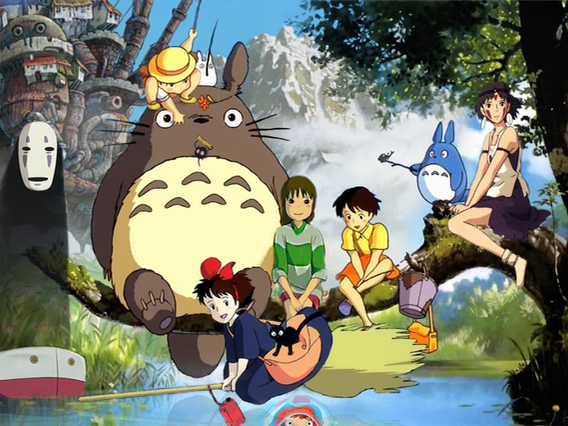
One of the few filmmakers who can truly be referred to as an auteur, Hayao Miyazaki has made a plethora of thoroughly entertaining anime movies, each filled to the brim with gorgeous visuals, strong and relatable characters, and left-leaning political themes drawn from his own history. With his announcement to come out of retirement (again) and in honor of the release of his new movie, The Boy and The Heron, here is every Studio Ghibli film directed by Hayao Miyazaki.
S-Tier
Princess Mononoke
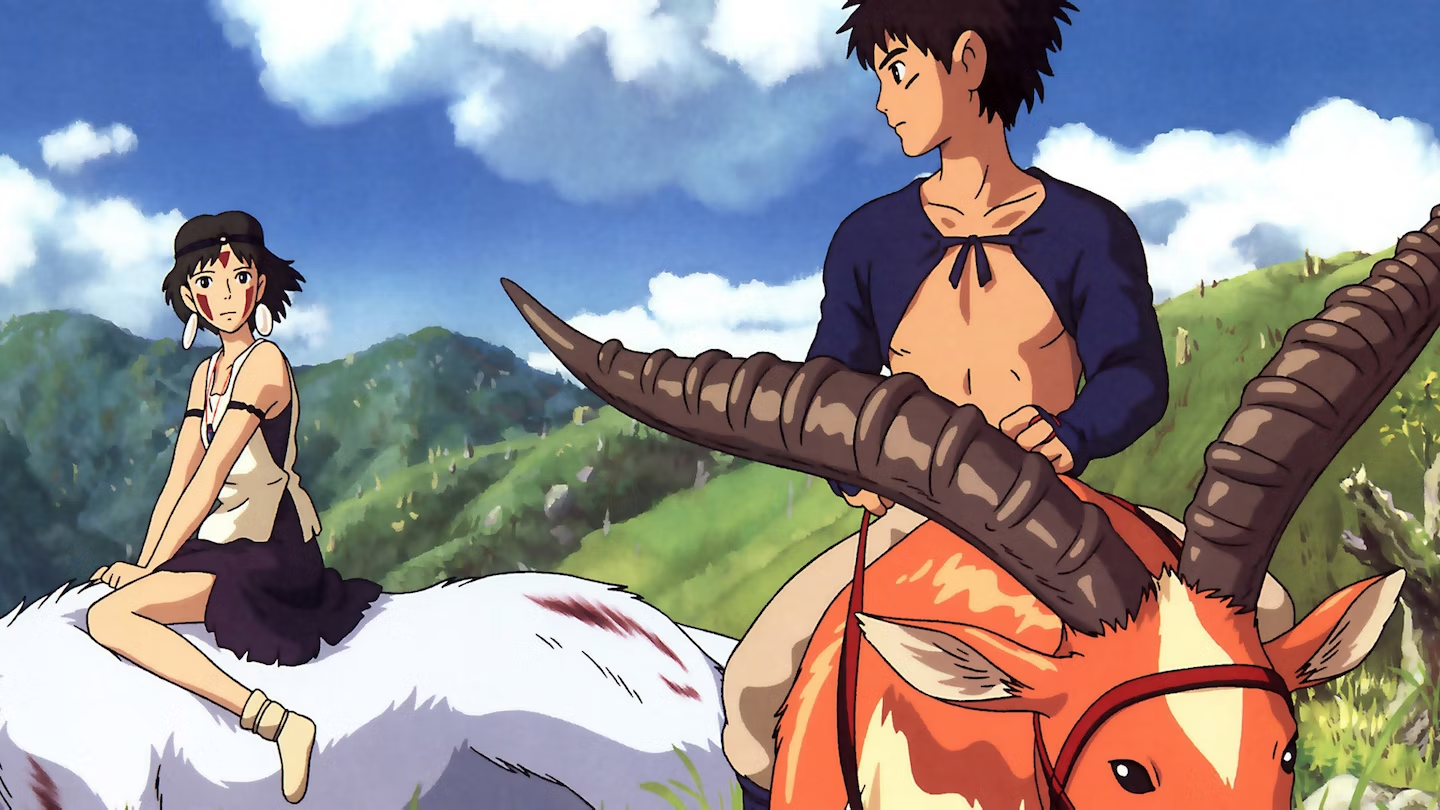
Princess Mononoke revolves around the noble Prince Ashitaka who becomes infected by a malevolent nature spirit as humanity slowly eradicates the spirits of the forest by defiling it for their own greed. In order to rid himself of the evil spirit, Ashitaka must embark on a journey that will not only determine his own fate, but the fate of the natural and human world as well. What makes Princess Mononoke the absolute best of Miyazaki’s films is that there is no singular villain responsible for the catastrophe of the forest. While you may think the villain is Lady Eboshi, the forest’s destruction is not directly her fault. Rather, the villain is hatred. This hatred taints everything around it, turning spirits into mindless, raging beasts.
Unlike most of Miyazaki’s later works, Princess Mononoke has a much more visceral imagery and a hard line art style, reminiscent of other anime that was prevalent in the 1990s. And to be honest, I do miss this art style as it has a far darker and grittier feel to it, which lends itself perfectly when depicting the more graphic elements of the film, such as when the Boar God becomes infected by hatred. The oozing dark red tentacles and dripping blood can make almost anyone’s stomach churn as the once proud and intelligent Boar God rapidly devolves into a raging beast. But besides the fantastic story and powerful themes, Princess Mononoke has my favorite score out of all of Miyazaki’s films. “The Legend of Prince Ashitaka”, composed by Joe Hisaiashi, starts out low and slightly ominous, before slowly rising into a heroic and epic sounding tune. When I first listened to it, even before watching the movie, I couldn’t help but fall in love with the score, which led me to watching the movie. What more can be said about this movie that hasn’t been said already? From the unforgettable story, breathtaking animation, tear jerking music and complex message of environmentalism and humanity, Princess Mononoke is Miyazaki at his absolute finest!
Castle in the Sky
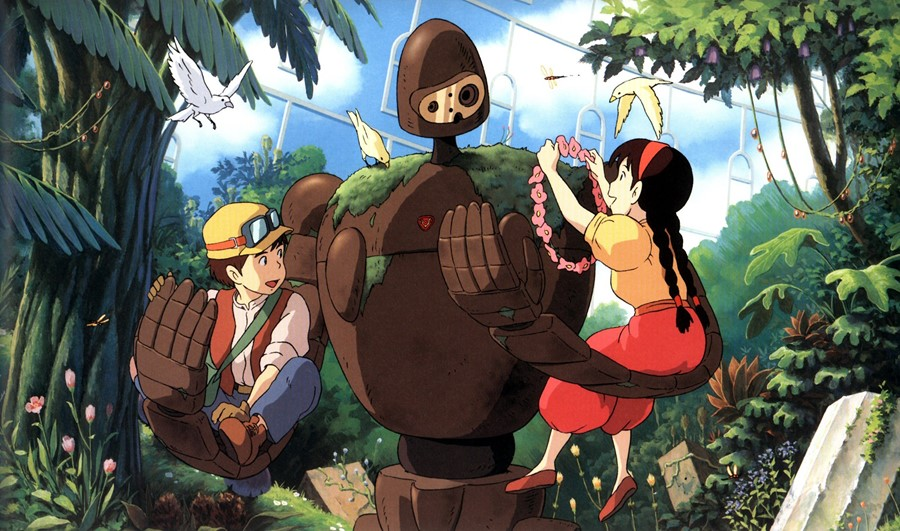
A rather simple story about Pazu, a boy who’s fascinated by the mythical world of Laputa meeting Sheeta, the last remaining survivor and princess of Laputa journeying off to discover the lost kingdom, all while evading the nefarious government agent Colonel Muska and the military under his command. Despite its simplicity, however, Castle in the Sky absolutely nails every category of its simplicity. From the believable and wholesome friendship between Pazu and Sheeta, to the relatable and charismatic characters (most notably Dola’s Gang), to even the breathtakingly imaginative interpretation of Laputa! But my favorite aspect has to be the music. Composed by the brilliant Joe Hisaiashi, the score pulls at your heartstrings with a strong feeling of nostalgia, while also uplifting you with a twinge of courageousness. The score is probably my second favorite out of all of Miyazaki’s films I’ve seen!
Like plenty of Hayao Miyazaki’s films, Castle in the Sky features a strong female protagonist and commentary on the corruption of humanity. In this case, the government represented by Colonel Muska. His greed for power not only leads to his drive to find Laputa, but to also increase the government’s military arsenal. Meanwhile, the soldiers are driven by their greed for Laputa’s riches. Despite not quite reaching the peak of storytelling that is present in Princess Mononoke, Miyazaki does succeed at driving home his intended message of human greed. All of this coupled with a highly memorable performance from the one and only Mark Hamill, it’s no secret that Castle of the Sky is so beloved by not only Studio Ghibli fans, but also movie fans in general.
A-Tier
Spirited Away
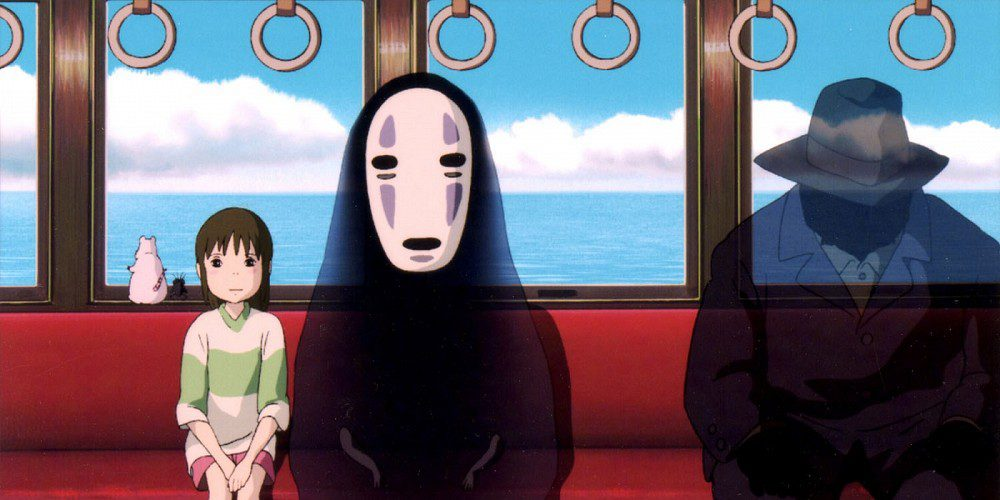
A simple story about a young girl, Chihiro, rescuing her parents from the wrath of the evil witch Yubaba spirit world, Spirited Away was the movie that introduced me to the world of Studio Ghibli. I remember being completely taken away at how beautiful the movie looked in addition to being afraid of No-Face when upon my initial viewing. But most importantly, I was impressed by how the movie stars a young girl with no special powers as the protagonist. Instead, her only “power” is the love she has for those around her and her moral compass.
But there is another more pervasive message underlying the story, that being the warning of the dangers and price of excessive consumerism. Chihiro’s parents are turned into pigs after their gluttony at one of the restaurants in the spirit world. We also see this when we first get a good look at the bathhouses, we see it from a bottom-up shot, representing the corporate ladder where decisions and policies come from the top and slowly trickle their way to the bottom. When Chihiro makes her way to Yubaba to get a job there, we also see how the bathhouses are structured: the lower levels are inspired by traditional Japanese housing, and the higher up the bathhouses go, the more Western the levels look. Yubaba’s room at the very top is lavishly decorated in gold, marble and velvet. And while Miyazaki loves to add political and social commentary, it sometimes feels overexaggerated in plenty of his early films. However, it is done in a much more subtle manner, playing with visual cues rather than outright stating the obvious. With beautiful animation, gorgeous visual storytelling that serves as eye protein for its story, it’s no wonder Spirited Away won Best Animated Film at the Academy Awards!
My Neighbor Totoro
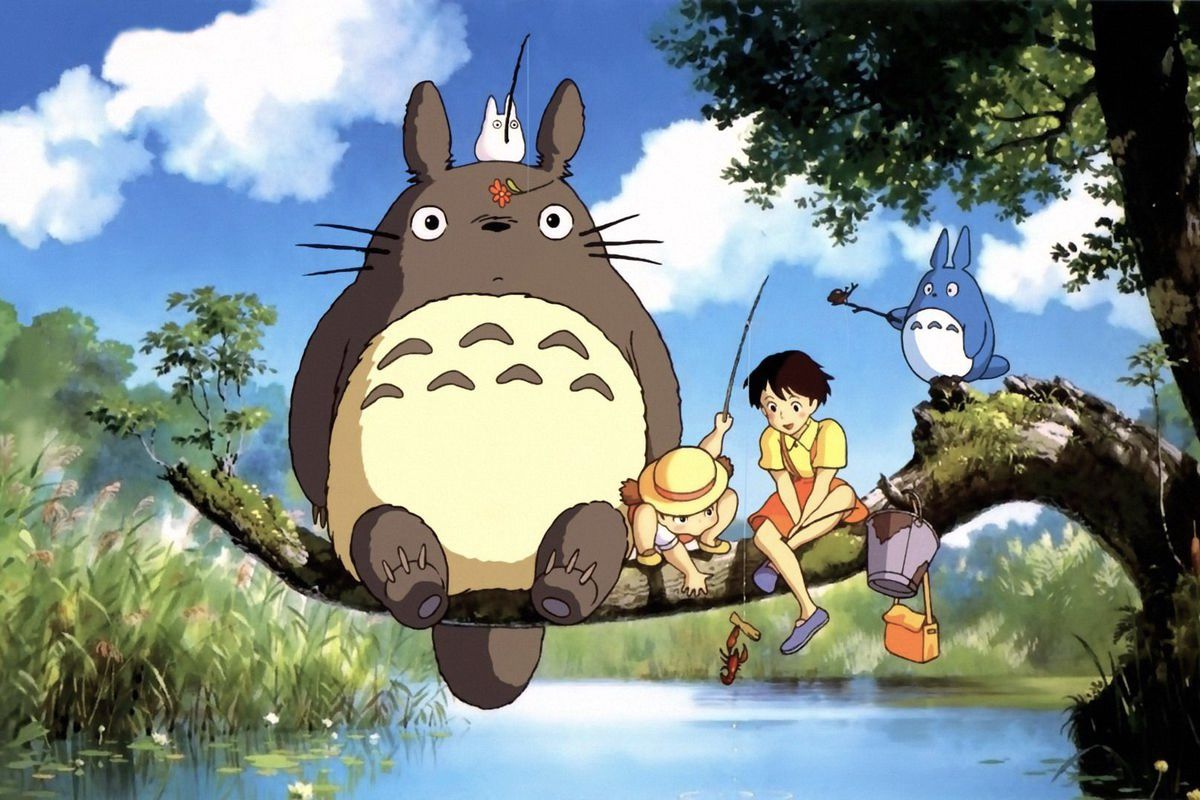
The ultimate feel-good movie, My Neighbor Totoro is one of Hayao Miyazaki’s most iconic films. Surrounding siblings Satsuki and Mei, the two sisters move to an old house in the countryside of Japan near the hospital where their sick mother is at. During their time there, they run into a giant, furry creature named Totoro along with its family of spirits, including a giant bus shaped like a cat and smaller versions of Totoro. When Mei goes missing on her way to the hospital, Satsuki calls for her new friends to help.
From the design of the lovable and fuzzy creatures, the bright and colorful characters and the whimsical tone, My Neighbor Totoro should be a staple in everyone’s film repertoire. It perfectly captures the curiosity of children and happy-go-lucky feel of childhood. The only pother Miyazaki film that does this is Ponyo, and it only feels like a shade compared to My Neighbor Totoro. Despite its simplicity the film still manages to fit in some themes involving environmentalism and animism, giving it more depth than one would expect. Combining all of this together leaves a film that will leave a mark on its audience even today, especially for the kids.
Howl’s Moving Castle
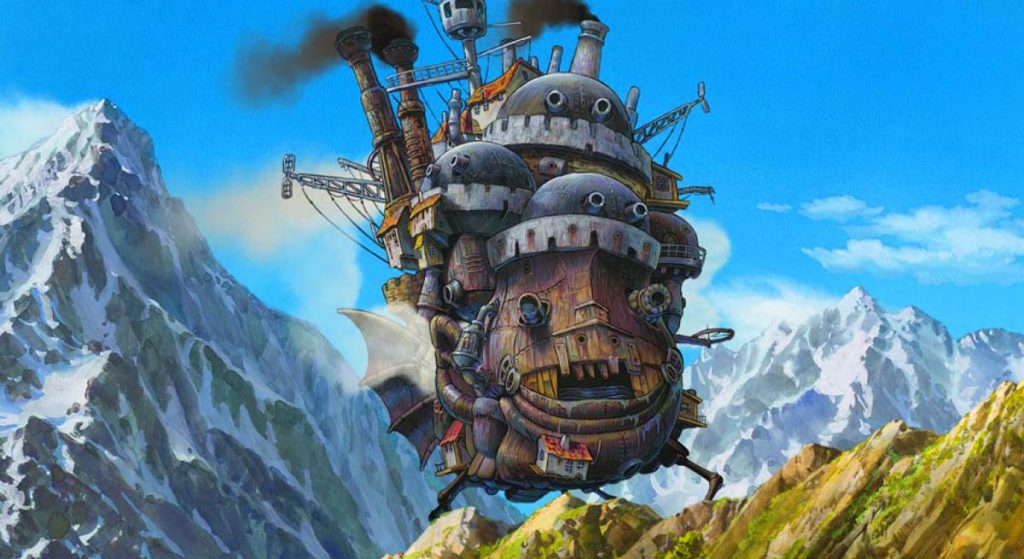
Miyazaki’s second castle-themed movie, Howl’s Moving Castle is one of his most overlooked and underrated films that he’s made. While the story appears to be rather basic, with a young woman named Sophie trying to break a curse of being turned into an old lady by the Witch of the Waste when a wizard named Howl falls in love with her, the movie is anything but basic. The movie tells a story of love, but not just love between Sophie and Howl. Rather, it’s about love for oneself. Sophie learns to love and accept herself for who she truly is, as well as accepting Howl and helping him love himself.
Much like most of Miyazaki’s films, the art style lends itself perfectly to its themes of self-acceptance. Despite this, Howl’s castle is by far the most aesthetically pleasing aspect of the film. It seamlessly combines elements of the fantastical and modern, almost akin to steampunk. But my favorite element of the film has to be its music. Weaving together classical instrumental with soft piano, the score is nothing short of absolutely romantic! You almost can’t help but imagine yourself at a high class ball. If you ask me, Howl’s Moving Castle is tied with Castle in the Sky for best original score. Overall, an all-around solid film, Howl’s Moving Castle is another hit for both the director and studio, only really undone by the other films just being better.
B-Tier
Nausicaa of the Valley of the Wind
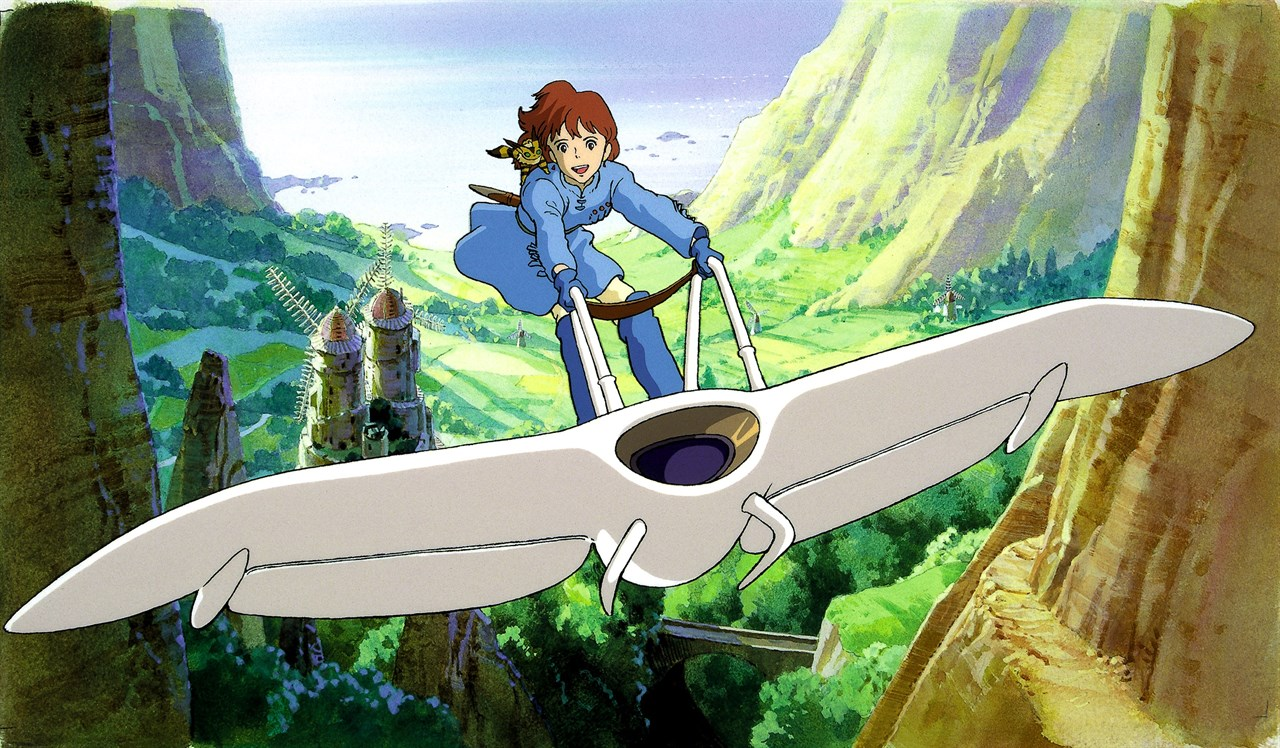
One thousand years have passed since the world was destroyed by war and the valley of the wind is one of the places still safe from the toxic jungle that has spread across the world. Nausicaa, the princess of the valley, is thrust into a conflict between two surviving kingdoms that threatens to destroy the valley and its inhabitants. Nausicaa and the Valley of the Wind is one of Miyazaki’s oldest works and contains many of his anti-war, environmentalist and feminist themes that would return in his later works and does those themes well here. Also similar to Princess Mononke the story doesn’t have a traditional antagonist, rather it makes greed, fear and anger the cause of the conflicts in the film and causing nature itself to lash out at everyone.
The film is also very imaginative, from its environments like the titular valley and the dark and hostile toxic forest, to its characters to even its vehicles including the memorable glider. Its protagonist is a strong lead who drives the story, embodies the themes of the film and is compelling to watch. Combined with a strong soundtrack and animation, Nausicaa and the Valley of the Wind manages to stand the test of time. While Princess Mononke and Castle in the Sky realize the themes better than Nausicaa, this film still stands as a peer to those films.
Porco Rosso
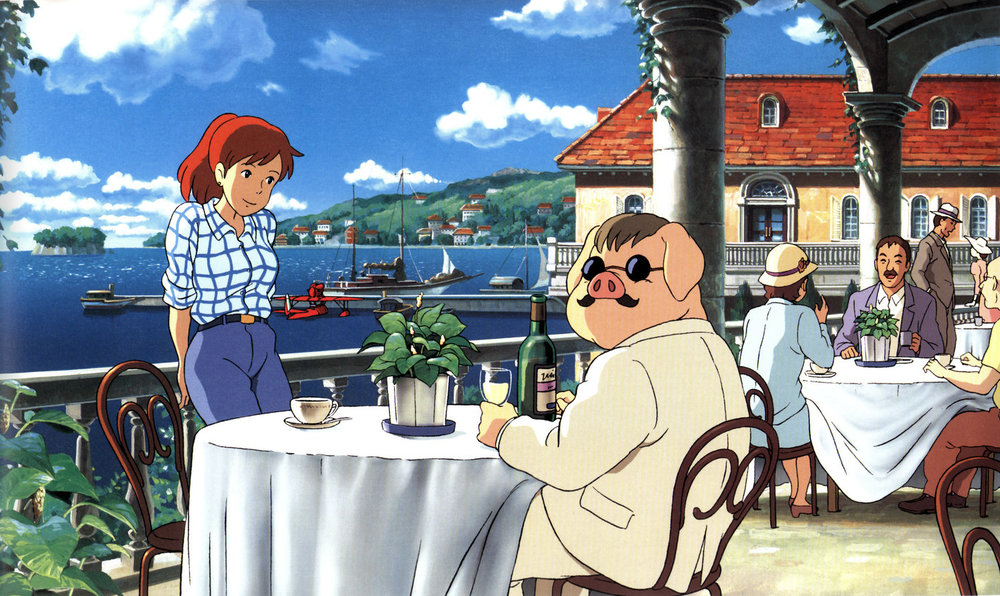
A story about a skilled pilot-turned anthropomorphic pig taking on pirates and mob bosses by air, Porco Rosso is the closest of Miyazaki’s films that can be described as an old-school classic romance. Besides being set in the late 1930s-40s, Porco Rosso as a character is reminiscent of the classic “hero with a dark past”. Despite being cursed with looking like a pig, he doesn’t concern himself with breaking the curse. Instead, he makes the most of his life, hunting down criminals by plane.
Voiced by the legendary Michael Keaton, Porco Rosso is a badass with a heart of gold. The best way I can describe him is Humphrey Bogart from Casa Blanca as a pig that so happens to be a pilot. Even though he is one of the best pilots in Italy, he refuses to side with the fascists in the war. Keaton brings an old-school charm that can be described as classically masculine, but also a gentler side to him around friends in addition to a fatherly cadence around children. Meanwhile, Susan Egan as Gina absolutely blew me away with both her singing voice and strong-willed nature. And despite falling in love with Porco Rosso, he does not end up with her, knowing he is a wanted man by the Italian government. Compared to Miyazaki’s other films, Porco Rosso is the only one that feels like a fairy tale disguised as a war romance in addition to being the only film to fully feature a fascist government. Despite being one of the shortest Miyazaki films, Porco Rosso is full of heart, guts and above all else, courage.
Kiki’s Delivery Service
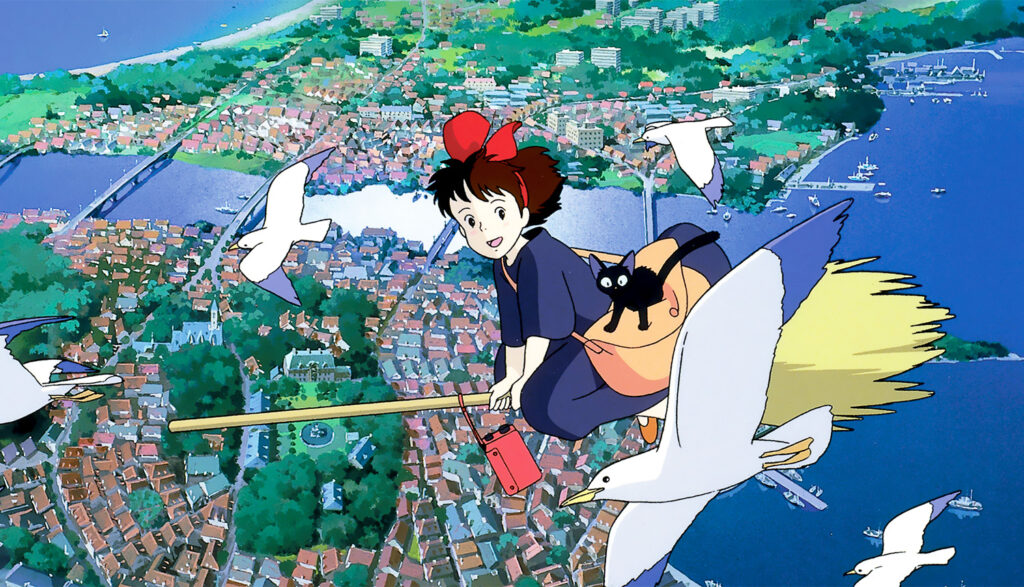
Kiki is a young witch who has reached the age where she must leave home in order to find her own calling. She goes to a large port town and starts a delivery service using her broom to travel to destinations. The film is very much a slice of life story rather than a traditional three act structure, and as such the film is pretty mundane for a film with a flying witch. But the story is still engaging and the characters, while simple, are fun to watch and are very sympathetic, especially our lead who we get to watch develop into a more confident person. The animation is strong as always for the studio and the music is pretty good, although not as memorable as other films. Kiki’s Delivery Service, while not the deepest Miyazaki film, is still an enjoyable time from beginning to end.
The Boy and The Heron

Miyazaki’s newest venture tells a tale of a young boy named Mahito, struggling to come to terms with his mother’s death during World War II. His father marries another woman, Natsuho, who becomes pregnant with his child. One day, comes across a Gray Heron who beckons him to an abandoned stone tower in order to save his mother. Mahito does whatever he can to shut the Gray Heron out. But when Natsuho goes missing, it’s up to Mahito to rescue her along with his unborn sibling.
The best way I can describe The Boy and The Heron is every Miyazaki film jammed into one. It takes visual cues from Howl’s Moving Castle, Princess Mononoke, Spirited Away and to a lesser extent, Castle in the Sky. But while I noticed many of these borrowed visual cues, Miyazaki adds another layer to mesh it all together. For example, the stone tower has a very gothic influence upon Mahito’s entry. The cold, marble walls and floors, the endless rows of books and the warm candlelit glow are reminiscent of a Satoshi Kon or Guillermo Del Toro film. This is also present in the music, with it taking inspiration from the soft piano in Spirited Away, but adding a slightly sinister and haunting flair. But what surprised me was Miyazaki’s use of liminality to add depth. Several scenes involving The Maker’s hideout appear to be empty or rather, lacking context. They appeared to serve as a transitional plane to another existence. And this all serves as foreshadowing the events to come. Despite this, the message of the film is somewhat lost as the movie goes on, with the ending feeling like an afterthought rather than a conclusion.
C-Tier
Ponyo

Ponyo is best described as cute. It lacks the depth many other of Miyazaki’s works contain, but the film is not going for that much depth. The writing is very fantastical and despite the stakes being a world-ending flood, the tone is very laid back. We get a set of decent characters, although none really stand out compared to other Miyazaki films. The animation is predictably great, and the music is good as well, though not the studios’ best work. Miyazaki himself stated to have slacked off on the project multiple times, and the finished product clearly reflects this. Ponyo as a character is rather bland and as a child, I found her to be sometimes annoying. It also didn’t help that the movie had way too much advertising surrounding it. Despite this, the film is a good family film that outdoes the majority of family films out there.
The Wind Rises
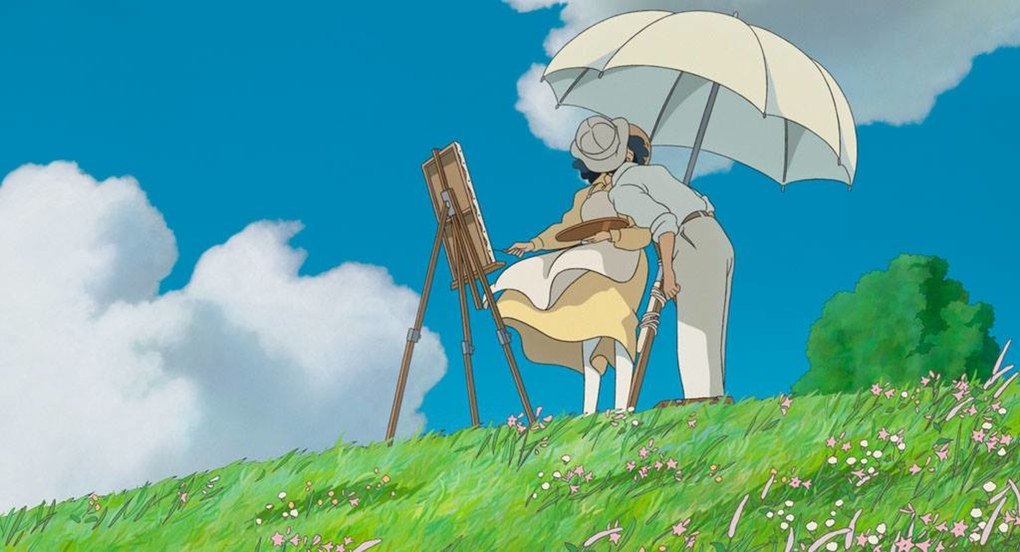
Ok, you’ll hate me for this, but hear me out: I really didn’t like The Wind Rises. Set in Japan during World War II, the film centers around Jiro Horikoshi, a boy who dreamed of becoming a pilot only to end up designing airplanes due to his poor eyesight. One day, he saves a young woman named Nahoko and her maid after an earthquake. Despite not giving her his name, Nahoko remembers the act her entire life, eventually meeting him later in life. Now an engineer designing war planes, Jiro must choose between his dream and his reality.
My biggest complaint about The Wind Rises? It’s boring. Hayao Miyazaki excels when he manages to effortlessly weave the fictional into the real world. Here, we don’t get any aspect of the fictional. Rather, everything is set in the real world. Even the dreams themselves don’t feel remotely magical, they just feel like colorful filler. But the biggest crime? They even made Joseph Gordon-Levitt boring. How do you even do that?! The love story between Jiro and Nahoko starts out promising, but gets forgotten during the second act, making her death all the more forgettable. The Wind Rises has an anti-war message, since Jiro originally wanted to design planes for transportation, yet makes them to bomb Pearl Harbor. I guess you can say he was born at the wrong time, but that still doesn’t make the movie anti-war. All of this, coupled with a two hour runtime and a rather dreary atmosphere, The Wind Rises failed to impress me.






